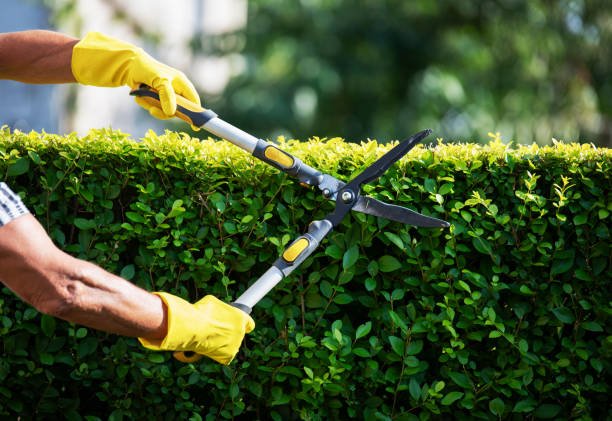Tree Trimming: Benefits, Techniques, and Best Practices
Tree trimming is an essential part of maintaining the health and aesthetics of your landscape. Whether you have a single tree in your backyard or a sprawling garden filled with various species, regular trimming helps ensure that your trees stay healthy, safe, and beautiful. This article will explore the benefits of tree trimming in San Jose CA, various techniques, when to trim, and some frequently asked questions.
Why Tree Trimming is Essential
Promotes Healthy Growth
One of the primary reasons for tree trimming is to promote healthy growth. When branches become overgrown or crowded, it can limit the amount of sunlight and air circulation the tree receives. Trimming helps remove dead or diseased branches, allowing for better nutrient distribution and overall health.
Enhances Aesthetic Appeal
Well-trimmed trees contribute significantly to the beauty of your landscape. Regular trimming helps maintain the shape and structure of trees, making them visually appealing. Whether you prefer a formal look or a more natural style, trimming allows you to shape your trees according to your preference.
Improves Safety
Overgrown branches can pose a safety hazard, especially during storms or high winds. Trimming helps eliminate weak or broken branches that may fall and cause injury or property damage. Keeping trees well-trimmed ensures a safer environment for your family and neighbors.
Increases Fruit Production
For fruit-bearing trees, regular trimming can enhance fruit production. By removing excess branches and foliage, you allow more sunlight to reach the fruit, leading to larger and healthier yields. This is especially important for trees like apple and peach, where proper air circulation and sunlight are crucial.
Tree Trimming Techniques
Crown Thinning
Crown thinning involves selectively removing branches to reduce the density of the tree’s crown. This technique improves light penetration and air circulation within the tree. It’s particularly beneficial for trees that have become too dense and require more sunlight for growth.
Crown Raising
Crown raising is the process of removing lower branches to elevate the tree’s canopy. This technique is often used to provide clearance for pedestrians, vehicles, or structures. It also helps improve the tree’s overall appearance and allows for better visibility beneath the tree.
Crown Reduction
Crown reduction involves cutting back the overall size of the tree without affecting its natural shape. This technique is beneficial for large trees that may be encroaching on buildings or power lines. It helps maintain a safe distance while preserving the tree’s aesthetics.
Deadwooding
Deadwooding is the removal of dead or dying branches. This technique not only enhances the tree’s appearance but also prevents the spread of disease and pest infestations. Regular deadwooding is essential for maintaining tree health and safety.
Timing Matters
The timing of tree trimming is crucial for optimal results. The best time to trim most trees is during their dormant season, typically late winter or early spring. Trimming during this time minimizes stress on the tree and encourages vigorous growth when the growing season begins.
Frequently Asked Questions (FAQs)
How often should I trim my trees?
The frequency of tree trimming depends on the species and growth rate of the tree. Generally, most trees benefit from trimming every 1 to 3 years. However, fast-growing species may require annual trimming.
Can I trim my trees myself?
While some minor trimming can be done by homeowners, it is often best to hire a professional arborist for significant trimming. They have the skills and equipment necessary to safely and effectively trim trees.
What tools do I need for tree trimming?
Essential tools for tree trimming include pruning shears, loppers, a handsaw, and a chainsaw for larger branches. Safety equipment such as gloves and goggles is also crucial when trimming.
What are the signs that my tree needs trimming?
Signs that a tree may need trimming include overgrown branches, dead or diseased limbs, and branches that are too close to power lines or structures. If a tree appears unbalanced or unhealthy, it may also require attention.
Can trimming harm my tree?
If done incorrectly, trimming can harm a tree. Over-trimming or cutting branches inappropriately can lead to stress, disease, or even tree death. It’s important to follow proper techniques or consult a professional.
Conclusion
Professional tree trimming is an important aspect of landscape maintenance that offers numerous benefits, from promoting healthy growth to enhancing safety and aesthetics. Understanding the different techniques and knowing when to trim can help you maintain the beauty and health of your trees. Whether you choose to do it yourself or hire a professional, regular tree trimming is a worthwhile investment in your property’s overall appearance and safety. Remember to consult with an expert when in doubt, ensuring your trees remain healthy and beautiful for years to come.






